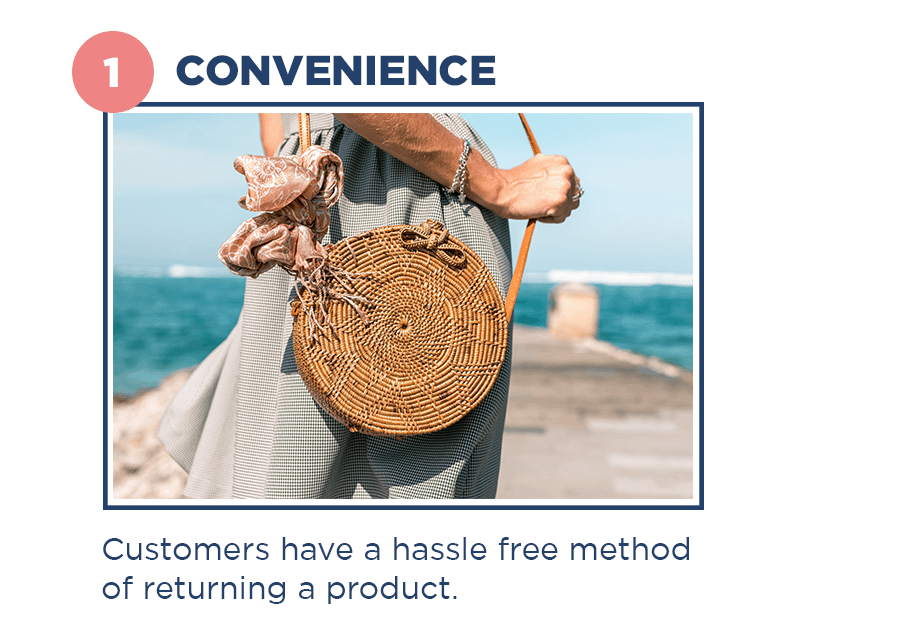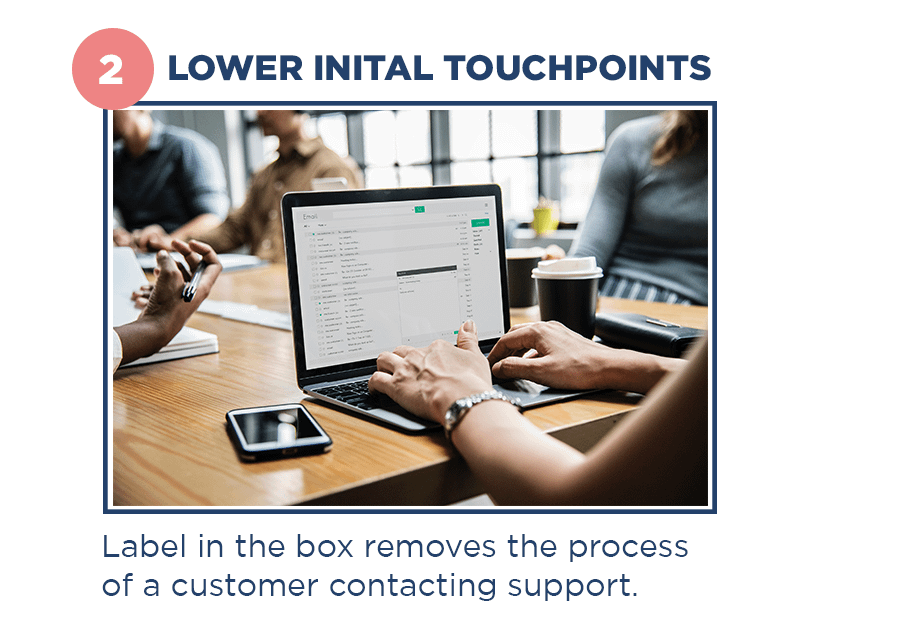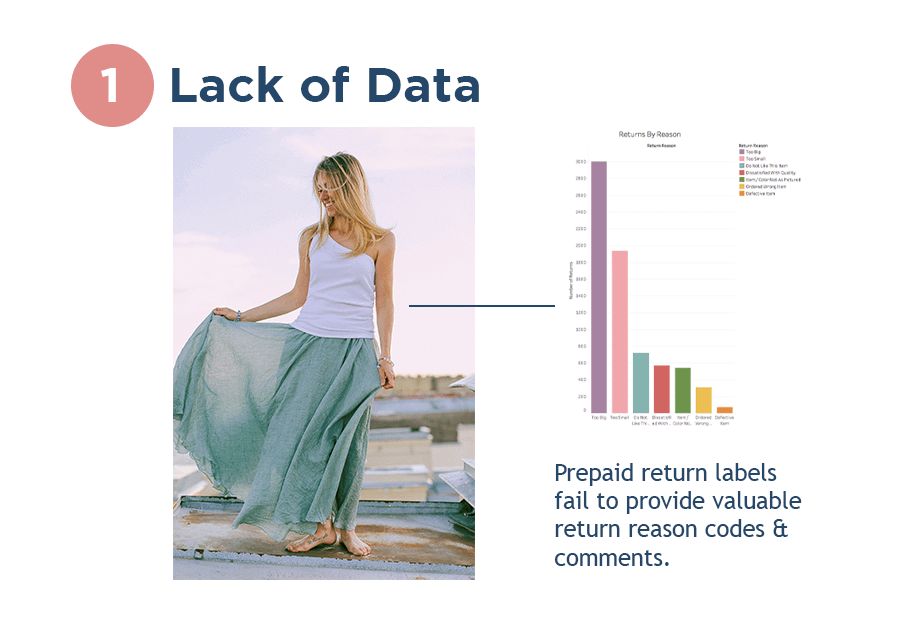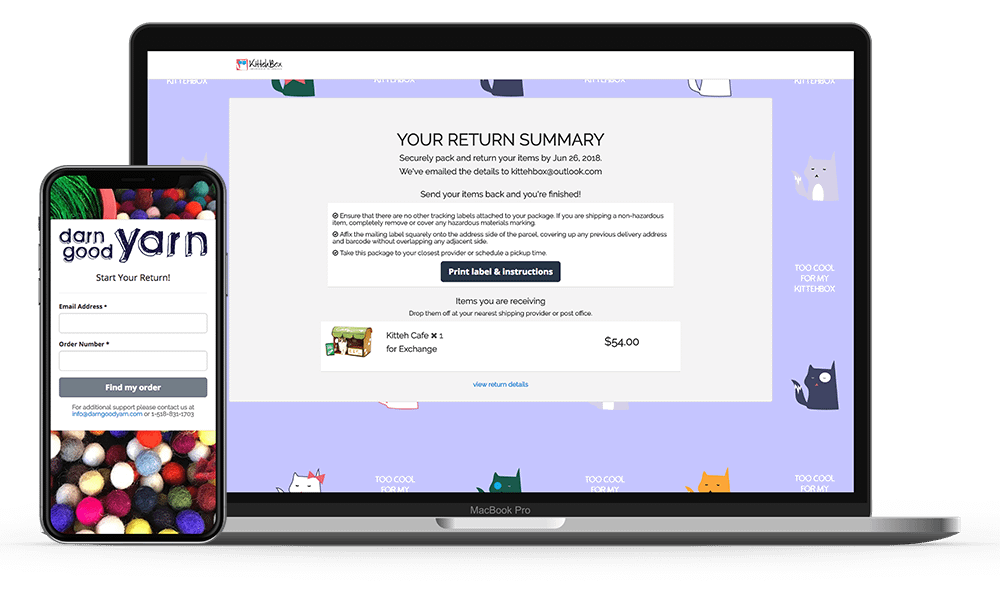6 Reasons to Stop Putting Shopify Return Labels in the Box

Return Labels Don’t Belong in The Box, Here’s Why:
Conventional wisdom says that including a Shopify return label in the box with every order you send out is a great way to enhance your returns process and keep customers happy.
This advice couldn’t be further from the truth.
Putting return labels in the box may seem like a good idea for Shopify retailers who are tired of the slow and messy process of returns management, but there are several underlying problems that cause this return policy to do more harm than good.
What’s the reasoning behind this return policy?
Let’s break down the logic behind the “return label in the box” strategy and see why it doesn’t work. First, let’s look at the reasons why the “label-in-the-box” returns strategy is so popular among Shopify retailers.
Prepaid return labels reduce the initial friction of a product return for a customer

On the surface level, prepaid shipping labels provide a quick and easy way for retailers to provide customers with a hassle-free return process.
Using this simple policy retailers are, at the very least are able to ensure that customers will have a smooth return transaction after a negative shopping experience.
Return labels in the box allow shoppers to side step the first part of return process:
Tedious communication between retailers and shoppers during the returns process is one if the primary reasons as to why handling Shopify returns and exchanges are so time and labor intensive.

By putting a label in the box, retailers can easily offset the number of touch points required per return, which allows frees up time and resources to focus on more productive tasks.
This combination of convenience and initial time savings is what makes the label-in-the-box approach so attractive to retailers who are struggling with handling returns and exchanges.
But, like many other things in life – the convenient and easy way isn’t usually the best.
The dangers of the label-in-the-box strategy:

Today’s ecommerce ecosystem is driven by data and analytics.
Without high-quality and accurate information, retailers wouldn’t be able to effectively market to their audiences, optimize conversions, and grow their brands.
A label in the box fails to provide visibility into why a product was returned:
Returns management follows the same philosophy; in order to effectively tackle the problem of returns and exchanges, we need to employ actionable insights about our products and customers.
Collecting returns data from each return and exchange transaction allows retailers to make important assessments about their products, customers, and marketing tactics.

When you allow shoppers to slap on a prepaid return shipping label to a box, all the data and insights go away.
Why is a shopper returning a product?
Was it an issue with size? Did they receive the wrong item? Was it a quality issue? And more importantly, how can we fix defects in our products, marketing, and supply chain to reduce product returns?
These questions become impossible to answer when a label-in-the-box is involved.
Increase in return rate:
One of the major pitfalls of convenience is that it works both ways.
While the accessibility of a prepaid return label may make the first part of the return process easier for retailers, it also acts as an enabler for shoppers (encouraging product returns).

If a shopper is on the fence about a purchase they made, a return label in the box will simply reinforce the feeling of buyer’s remorse.
If a shopper isn’t satisfied with a purchase, the retailer should try to address the source of that dissatisfaction, instead of enabling an internal panic mechanism for shoppers.
Additionally, a return process that is too convenient for shoppers might encourage unwanted activity, such as returns fraud.
You can’t enforce your return policy and control when a product is sent back:
Unlike return policies which require shoppers to complete an automated return process or contact customer support to start a return, a return involving a prepaid return shipping label in the box can’t be enforced.
There’s no prevention mechanism in place to stop a shopper from returning a product past a retailer’s allowable return window.

Although retailers always reserve the power to reject a return past the allowable return window, it’s generally easier to deal with one rogue shopper than a backlash on social media.
This lack of control also applies to items that are discounted and marked for final sale.
You can’t save the sale by offering different return options:
A product return doesn’t always have to end in a lost sale; retailers can soften the blow a product return has on their bottom line and shopper relationship by offering several reimbursement options.

Store credit, gift card, and exchange options make it easy for retailers to save the sale, and impress the shopper with a smooth returns experience, leaving both parties satisfied.
By including a return label in the box, the ability to easily provide multiple return types, and any hope of saving the sale, vanishes.
Return labels cause messy workflows, which result in operational inefficiency and more touch points:
With a pre-paid return label, shoppers bypass the step of contacting customer support or generating an RMA number through an automated return solution.
This side-stepping of the return process leads to difficult and inefficient workflows for your operations team.

Without knowing a when a product return will arrive, it becomes difficult for your team to dedicate the time and resources to effectively handle it.
Couple this lack of visibility with periods of high return volume, like the holiday season – and you’ll quickly see the nightmare a label in the box induces.
Increased hidden support costs:
Remember the promise of customer support low touch points that come with a label in the box?
Well, it’s only a temporary dream.

Customer touch points may actually increase as result of prepaid shipping labels.
Returning a product that was a gift? Lost the label in the box?
Dealing with these inquiries require a high-touch point experience, and often times yield a low-value result.
What you should do instead:
Now that we’ve identified the problems that a label in the box introduces to your company, let’s take a look at the some alternatives:
Automated Shopify Returns Management:
Cumbersome returns & exchanges are at the root of inefficiency and lost revenue for many Shopify retailers, regardless of product assortment.

Unlike a prepaid return label, an automated Shopify returns management solution bridges the gap between shopper convenience, operational efficiency, and valuable insights about your returns, customers, and products.
ReturnLogic provides a customer-facing returns portal, so that shoppers can request returns on their own. We also provide the backend automation and flexibility to help you take control of your return process.



